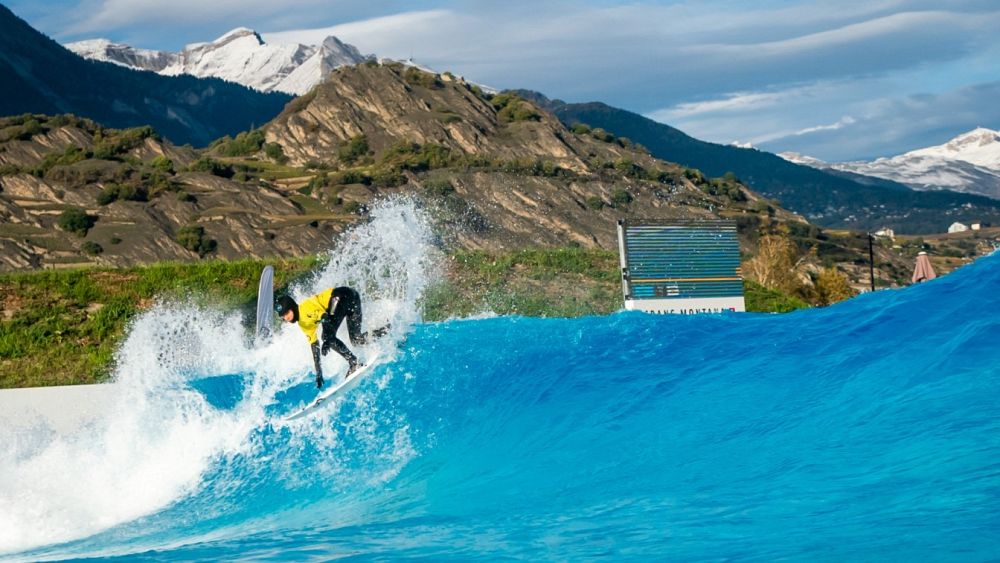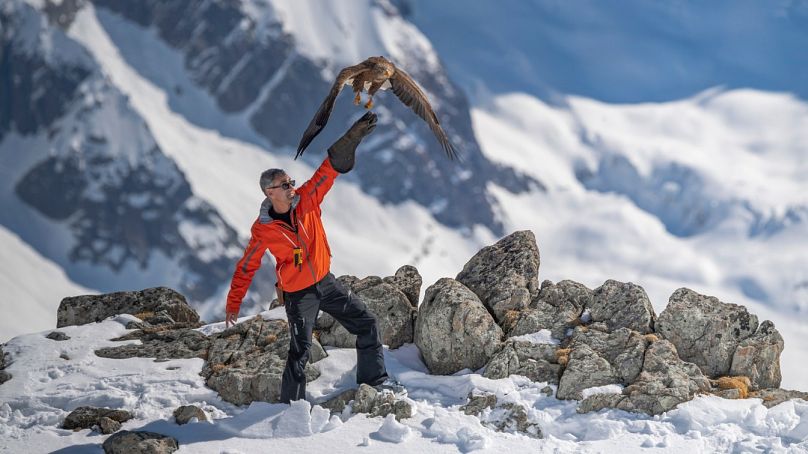
Snow-topped chalets and skiers schussing down pristine slopes spring to mind when you think of winter in the Alps.
But this year, many European ski resorts struggled with a lack of snow, due to unseasonably warm temperatures and heavy rainfall. As a result, half of France’s ski slopes were forced to close.
With warming winters set to continue, many ski resorts are looking to provide alternative entertainment to attract visitors — in case skiing isn’t possible.
What have the conditions been like in the Alps this winter?
In December, France experienced its warmest weather since 1997 with temperatures reaching seven or eight degrees higher than the seasonal norm, according to Météo-France. Switzerland and Austria faced similar problems with skyrocketing temperatures melting the early season snow, leaving slopes bare and skiers disappointed.
Popular ski resorts like Morzine faced an uncertain time. “There was very little snow on the ground over the Christmas period. It was a tricky situation,” says Sara Burdon, head of communications at the Morzine Tourism Office. Artificial snow is often created during dry weather spells, “however we couldn’t use the snow cannons as temperatures weren’t low enough,” she explains.
Fortunately, heavy snowfall arrived in the second week of January, but mild temperatures over Christmas and New Year are becoming increasingly common. Since 1951, almost half of France’s 169 ski resorts have closed due to lack of snow, according to a study by the University of Grenoble.
How are ski resorts adapting to a warmer climate?
Tucked away in France’s Jura region, 45 minutes from Lausanne, the tiny ski resort of Métabief is pioneering the way when it comes to tackling climate change.
It was the first French ski resort to arrange a climatic study with Météo-France’s Le Centre d’Etudes de la Neige (Centre for Snow Studies). Its relatively low altitude — at 1,463 metres above sea level — will likely mean visitors won’t be able to ski here beyond 2035.
Instead of waiting to see what happens, Métabief has taken matters into its own hands. The resort has already introduced a range of off-snow activities, including an all-season toboggan run, winter mountain biking, caving and guided horse rides.
“We have no choice but to adapt to these changes,” Sylvain Authier, head of slopes at Métabief told EU Strategy for the Alpine Region (EUSALP). “We need to make sure people can continue to do many winter activities. We’d better do it now, because in 10 years’ time, who knows?”
New outdoor activities are emerging at ski resorts
Across Europe, ski resorts like Métabief are extending their summer activities to maintain visitor demand during the warmer winter months. Mountain biking and hiking are common, but some regions are thinking outside the box to provide more unusual entertainment.
Take Morzine, for example, where you can go walking with eagles. At 1,500m above sea level, animal conservationist Jacques-Olivier Travers runs falconry shows featuring Europe’s largest birds of prey.
Here, you can learn about snowy owls, feed giant condors and set off on a hike while Fletcher the white-tailed eagle circles overhead. Travers hopes that by teaching visitors about these birds of prey, he can also raise awareness for their conservation.

Over in Switzerland, surfers can take to the waves year-round at Alaïa Bay. Just 45 minutes drive from Verbier, the world-class inland surfing lake is aiming to stay open for 10 months of the year, from early February to mid-December, so visitors can swap their skis for a surfboard during the winter months.
“The water isn’t heated, so the temperature varies between 5 and 10°C,” says Vincent Riba, head of communications at the Alaïa Group. “However, with the right wetsuit and gloves, you don’t feel the cold, plus you stay active for the whole session — you can take a wave every three to four minutes, depending on the number of participants.”
Music gigs and artistic events are flourishing at ski resorts
While the Alps naturally lends itself to outdoor activities, there are plenty of cultural events popping up across France, Switzerland and Austria.
This season, Les Gets in France hosted the first Montreux Comedy Goes Skiing, organised by the Montreux Comedy Festival, the world’s largest French-speaking comedy event. Elsewhere, winter music festivals have proved an enormous success — from the eclectic Rock The Pistes festival in the Portes du Soleil to Polaris for electronic fans in Verbier.
Over in Austria, Top of the Mountain attracts over 20,000 visitors to Ischgl for its biannual gigs; previous headliners include Robbie Williams, Katy Perry and Elton John.
Art has proved another way to attract visitors. The Grove Gallery, in Swiss ski resort Villars-Sur-Ollon, saw high visitor numbers when it launched in late December.
“The lack of snow actually worked in our favour,” says Rachel Chester, manager of the Grove Gallery Villars. “Over Christmas and New Year, a lot of people came to the gallery, as they weren’t able to ski as much, so that really helped us put our name on the map.”
Not only does the gallery display works by international artists, but it also hosts a range of cultural events — from art workshops to intimate artist dinners. It has seen an increase in visitors signing up for its activities, especially the yoga and meditation workshops.
How can ski resorts and skiers help mitigate the impact of climate change?
While it’s certain that ski resorts across Europe have more to offer, snow sports are not over yet. Winters may become warmer and shorter, but skiing and snowboarding will continue to operate. This is especially true for resorts above 1,500m where snow conditions are more stable.
Resorts are also increasingly introducing eco-friendly practices to reduce their carbon emissions — from slowing down ski lifts to reducing energy consumption and introducing Teflon outdoor ice rinks.
However, visitors can still play their part. “50 to 70 per cent of carbon emissions come from visitors travelling to resorts,” says Burdon.
To combat this, Morzine has teamed up with Montagne Verte to provide discounts for anyone who arrives by train; these include reduced prices on ski passes, food, drinks and shopping.
With eco initiatives like this, plus all the sustainability work going on behind the scenes, there’s hope for ski resorts yet.

